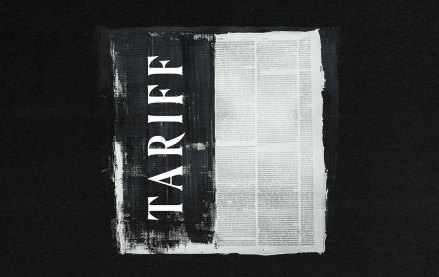Register by Jan 13 to save on passes and connect with marketers from Uber, Bose and more
Confessions of a comms exec on exploring conservative media partnerships in hyper-partisan era

This article is part of our Confessions series, in which we trade anonymity for candor to get an unvarnished look at the people, processes and problems inside the industry. More from the series →
For the past few years, big brands and their agency partners have largely shied away from advertising on conservative channels, citing brand safety fears in ads showing up next to politically charged content. The tides, however, may be turning.
In today’s highly polarized cultural stratosphere, marketers are toeing the line with a both-sides approach to media spend and marketing messaging. For one diverse, inclusivity-driven comms agency, that line toeing has meant taking on a conservative, faith-based media client, and trying to better understand right-wing media to help clients adjust to the new hyper-partisan normal.
“It’s a wait and see — let’s dip a toe and see if we don’t get messed up,” an exec from the agency, who spoke on the condition of anonymity. “Let’s see if we don’t turn into another Target or another AB InBev, and if we don’t, let’s keep going.”
In this conversation — part of our Confessions series, where we trade anonymity for candor — the executive talks about clients’ changing relationship with conservative media and what that means for agency-client work.
This interview has been edited for length and clarity.
Everything seems more politicized than ever. How are your clients responding to the so-called cultural wars?
I’m going to speak to it not as an agency that represents and does comms for agencies. I’m going to speak to it as a PR agency now representing a type of client that normally we may not have. We have actually taken on a conservative, [faith-based] media company that reached to us to do some programming around one of their tentpole [events]. Usually, we would be like, “Absolutely not.” That’s not something that we would want to touch, especially as a multi-diverse agency. But we have decided that we want to take this one. We want to see what the other side is doing, we really want to see what the other side is saying. We’re not going to know unless we’re [out from] behind the frontlines.
Brands and agencies have avoided those types of partnerships and media buys for the past few years. Why is your agency taking that on?
I liken it to the fact that I have started reading right-wing media because I want to see what’s out there, I want to see what they’re saying. I want to see what other brands are saying and what other brands are doing. I can’t do that if I’m just reading CNN and The Cut and New York Magazine. We’re doing that and I’m seeing some of our clients do that as well. It’s less another set of eyes [on campaigns and messaging] and a little more open to seeing what’s on the other side of the fence than we would have been before.
Are you seeing ad dollars start to flow to these conservative media channels as well?
Absolutely. Some of the big brands, streamers and platforms that are now involved. I’m surprised they’re signing up. I wish I could tell you who they were, but they are brands that you know.
What’s the drive for clients?
They want to still make money without ruffling any feathers and not leaving anybody out in the cold. Before, they were like, “We don’t want to touch that because nobody’s touching that. Don’t even go there. That flies in the face of brand safety.” Brand suitability wasn’t even a term at that point. They just didn’t want to be associated with perceived hate speech, violence, pornography or illegal content. Now, because the pendulum has swung so far in the direction of “Anything political, we’re not going to touch,” people are realizing they can’t do that anymore because the administration has really infiltrated every single part of culture. Before, culture could exist without politics.
How many clients are doing this?
I’m not seeing a massive shift. It’s project by project. It depends on the time, the place and the purpose. It’s still a little bit of a wait-and-see approach.
For those that are experimenting, where are the dollars going? Conservative influencers? Podcasts?
I want to say across the board. Two clients in particular — one focused on influencer marketing and one focused on B2B. Completely different audiences. On the consumer side, the aperture is widening a little bit. On the B2B side, the aperture is widening a bit, but it’s not across the board. Everyone’s taking calculated risks in a vacuum that it can’t affect other parts of the business.
More in Marketing

What does media spend look like for 2026? It could be worse — and it might be
Forecasts for 2026 media spend range from 6.6% on the lower end to over 10% but the primary beneficiaries will be commerce, social and search.

Pitch deck: How Amazon is emerging as the proof layer for TV spend
Amazon is positioning itself to advertisers as the “first-stop shop” for planning, buying, optimizing and measuring TV.

Here are the 2025 brand winners and losers of tariffs
Tariffs completely upended the retail industry in 2025 — and no company was left unscathed.








